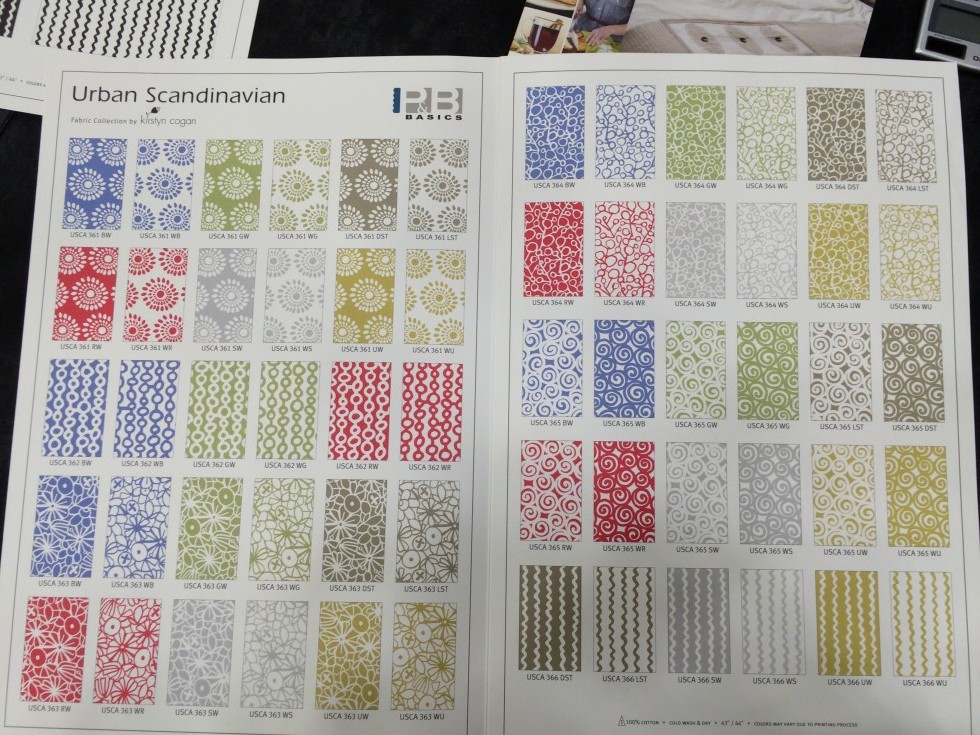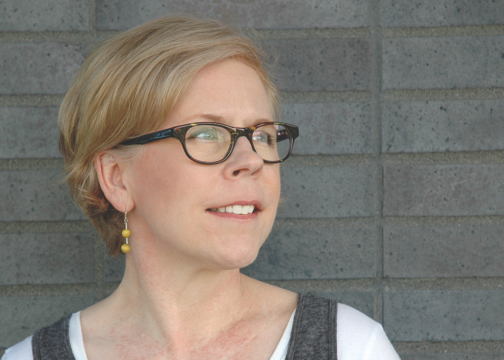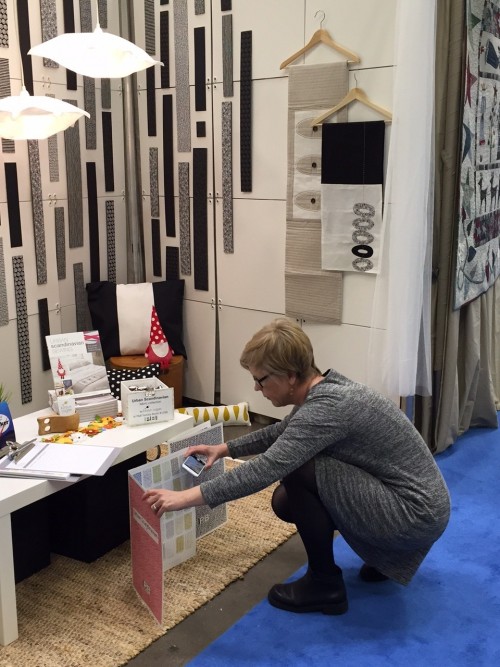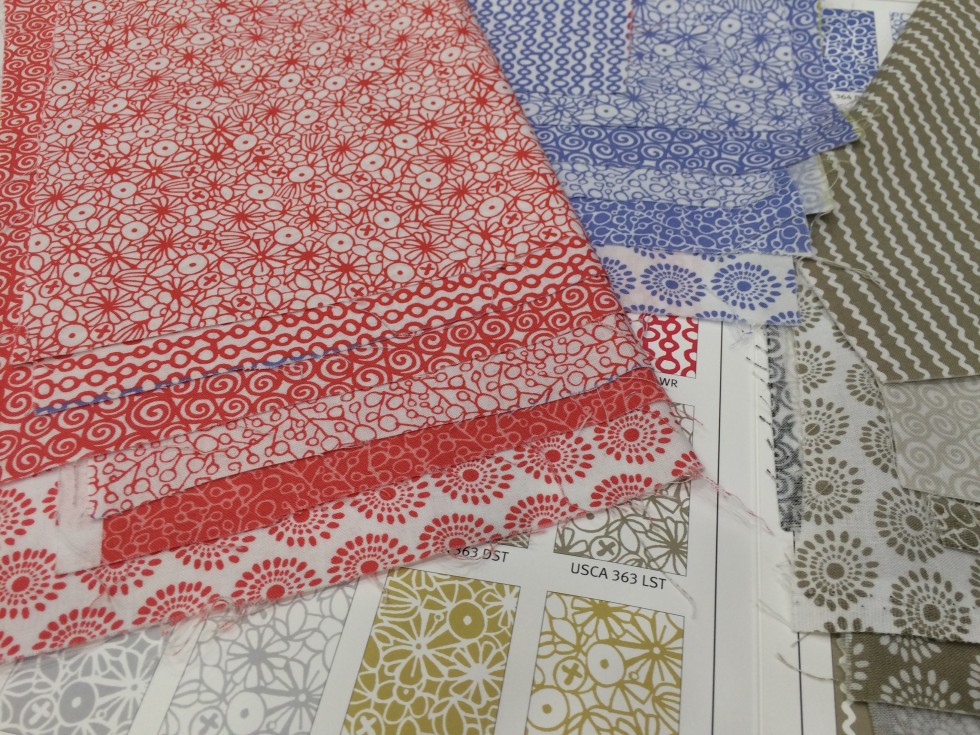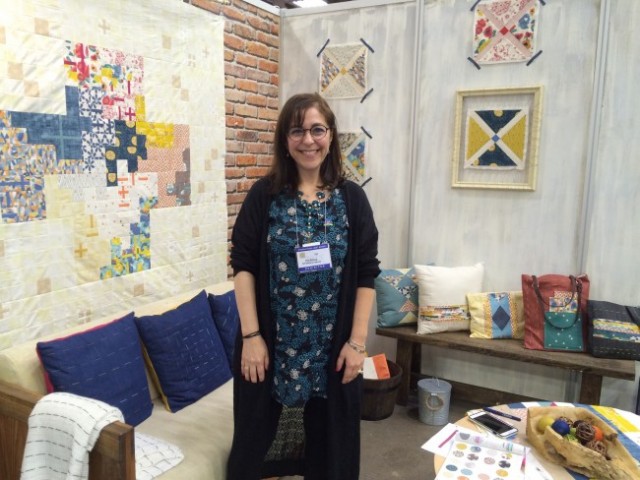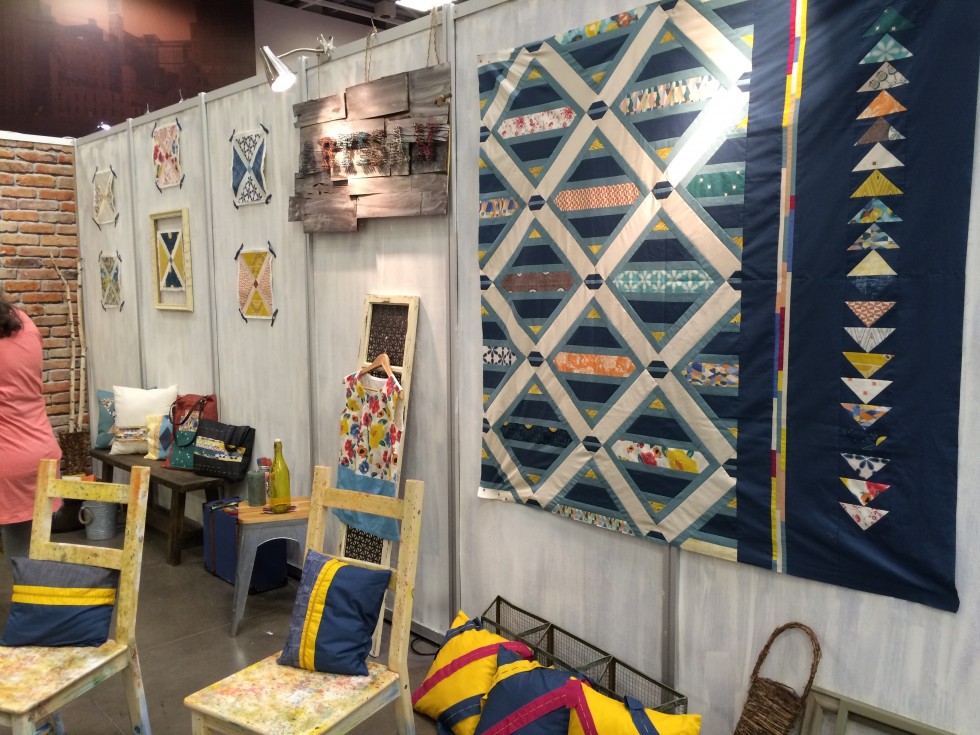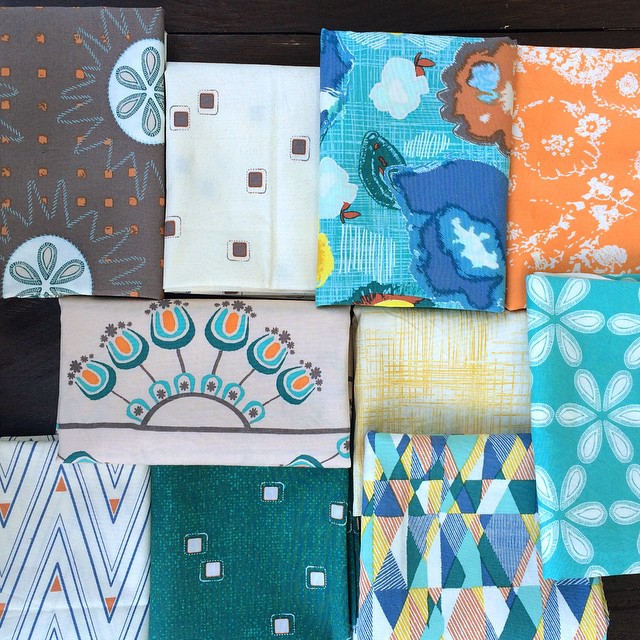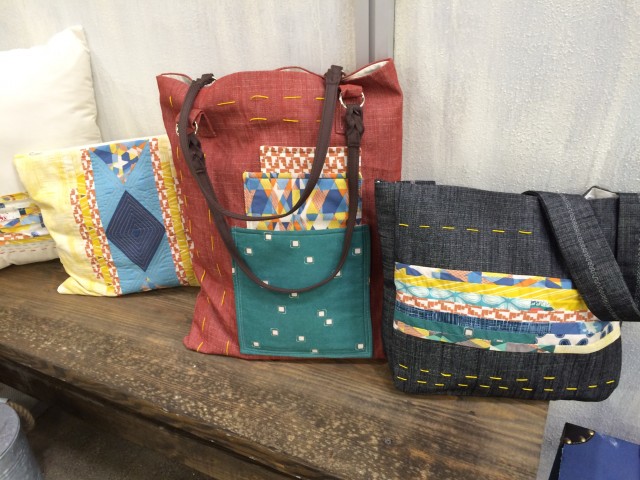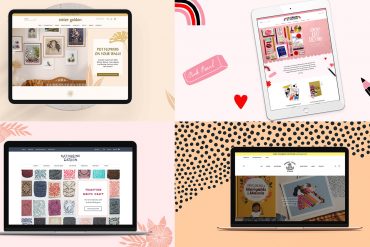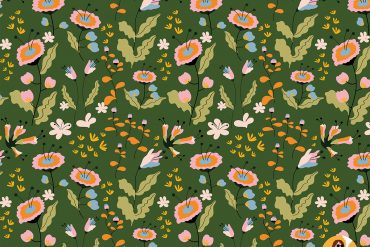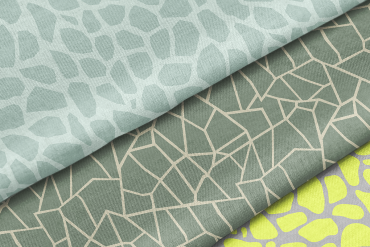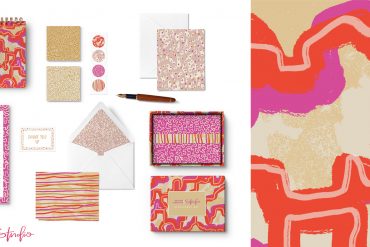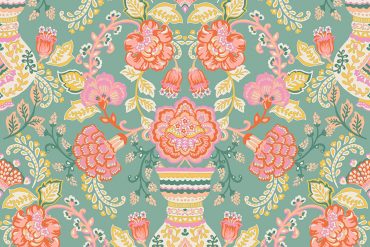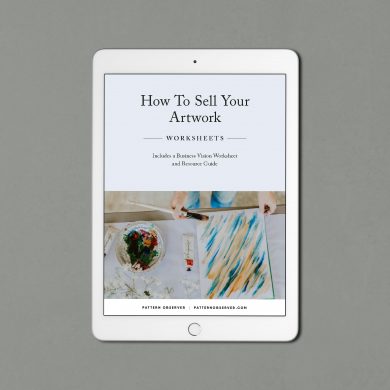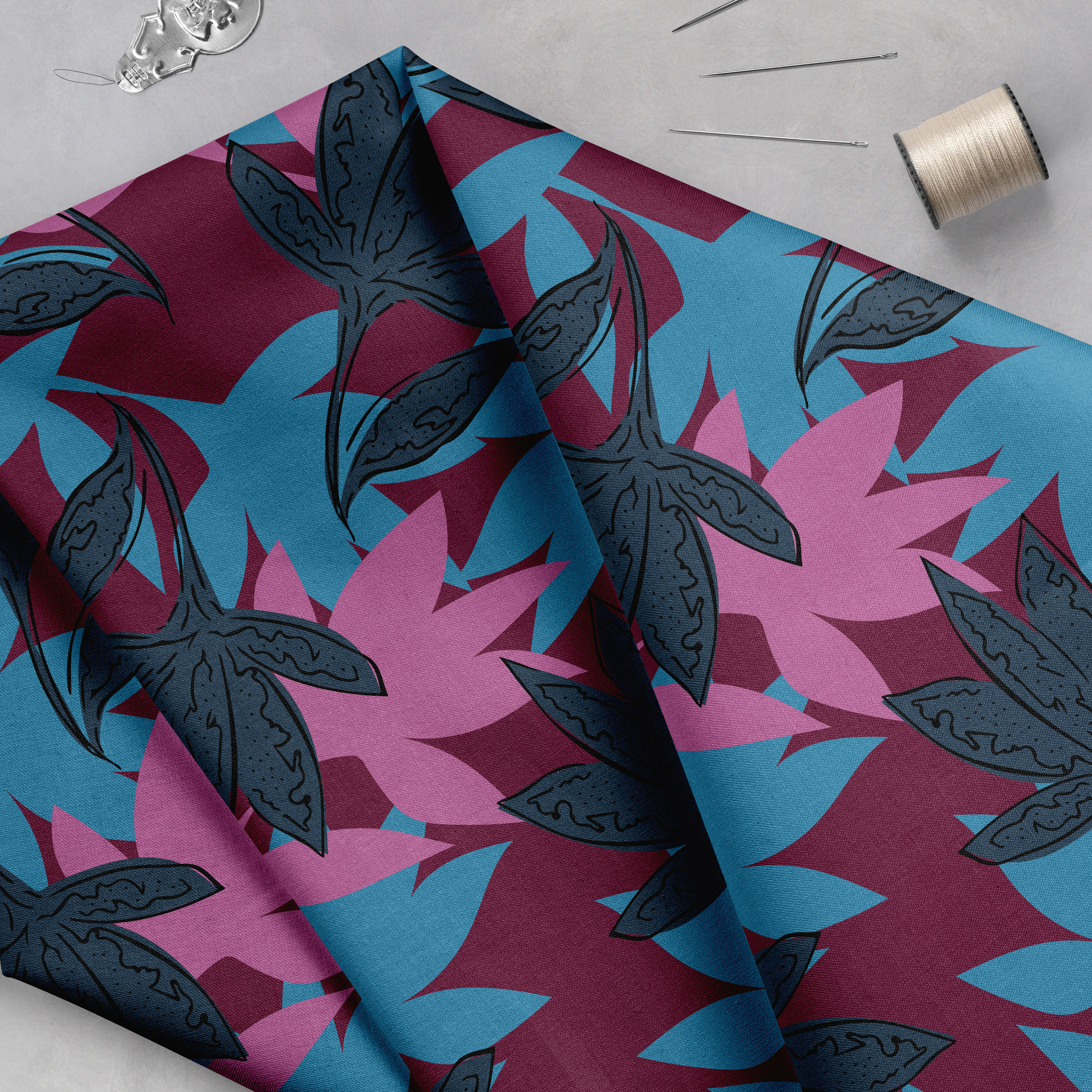Post by Jamie Kalvestran, part of a series of interviews from the 2015 International Quilt Market. (Part one found here, part two here.)
 Kirstyn Cogan – Designer, P&B Textiles
Kirstyn Cogan – Designer, P&B Textiles
I met designer Kirstyn Cogan just after speaking with the folks from P&B Textiles at Quilt Market. You see Kirstyn is one of their new designers! While they were showing me their new collections my Danish genes may have caused my heart to beat just a little faster as I gazed upon Kirstyn’s collection titled, Urban Scandinavian, and I knew I wanted to meet her! I was super excited when she agreed to a spur of the moment interview. Yes! Yes! Yes!
Kirstyn would you tell us the inspiration behind Urban Scandinavian?
My family heritage – as well as recent travels to Stockholm and Helsinki. I’ve had a longtime love of modern Scandinavian design and a desire to design a simple basics line that would have broad appeal in the quilting market.
When is the collection being released/ available in stores?
It should start shipping to stores in July.
What trends are you seeing in the quilting marketplace?
- Eclectic mixes of pattern
- Mindful use of negative space – whether using solids or printed fabric
- Paper piecing very popular… illustrative quality of cut paper.
- Companies beginning to offer up more than traditional quilting cotton: shot cotton, double gauze, knits all coming online.
- Modern use of traditional techniques like cross-stitching
- Modern twists on traditional quilting motifs.
- Fabric used for fashion and home décor in a big way… so much more than quilting!
What advice would you give designers about putting a portfolio together for this industry?
First I’d say do some research and understand the market and companies you’d like to approach. I think it’s important to portray a consistent style these days (unless you are applying for a staff position in which you are required to work in a wide range of styles). Art buyers want to have a clear idea of what they will get from you and what they can expect.
Show 3 – 5 strong collection ideas.
When working up a collection presentation – consider how the fabric will or could be used. You don’t have to go too overboard… but I’d start with a main print – then pull out accent prints from elements of the primary design. I find it’s sometimes helpful to illustrate how you see the fabric being used – a quilt design, a skirt and/or tote bag for example. The quilting industry is so much more than quilts these days. People are using “quilting” fabric for fashion, home décor and everything in between! Be mindful of a strong color story too.
What do you spend most of your time on when running a licensing business?
- business
- marketing & promotion
- creating art
- other
For me… it really depends on what’s going on. I wish I were more consistent with balancing out all of the above. When I was working on my book “Urban Scandinavian Sewing” – it was a total marathon of designing and writing (for about a year)! Now that the book has been released along side of the fabric collection – I’m much more in a marketing & promoting phase. Business and creating art gets worked into the mix along the way… but it’s interesting how the “flow” is more often than not dependent on the scale of the project at hand and the deadlines.
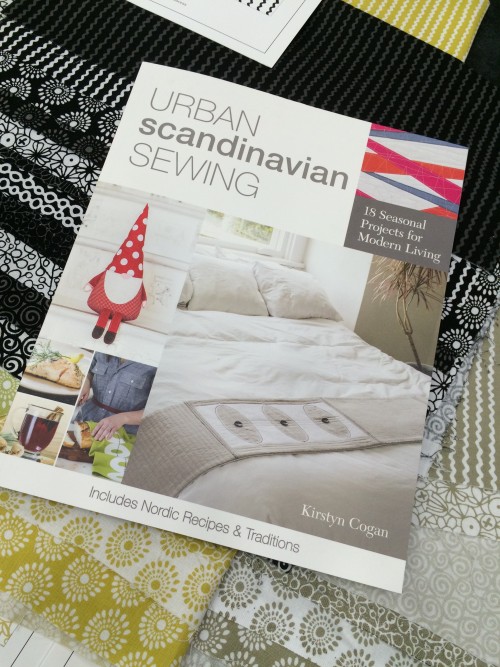
Yes!! That being said… building a viable business with your art is an investment of time, money and belief in yourself and your work. It’s a process and for most of us will take time (sometimes lots of time). It’s not enough to create art – put it online and expect the right people to find you. We have to seek out ways to connect with industry professionals and put ourselves out there to make build the professional connections needed in building a licensing business. The bottom line is – it’s about building relationships.
Were you already in the quilting industry before you began designing fabric? If yes, what was your role?
My background is in visual communication (i.e. graphic design and illustration). I spent a lot of time working as a staff artist within the garment industry – designing screen prints and embroidery applique for mass market. The first fabric collection I did for the quilting market was done as a freelancer – working with a long time friend/colleague who was art directing for a quilting fabric company. To make a long story short… she told me I should go to Quilt Market to check it out. It quickly became very obvious that my skill set was made for the quilting market… one thing led to another and here I am.
Find out more about Kirstyn on her website: http://www.kirstyncogan.com/
 Pat Bravo – Designer, Art Gallery Fabrics
Pat Bravo – Designer, Art Gallery Fabrics
How did I meet Pat Bravo? I would call it “a fortunate stroke of serendipity”! While walking the show I stopped by the booth of Bari J Ackerman. You may remember her Pattern Observer feature post titled, Trade Shows 101 with Bari J. Ackerman. Anyway, I wanted to introduce myself and say “Hello”. We chatted for a while and then she introduced me to Pat. Pat invited me to her booth and we sat on the most comfy couch and had a nice long chat which turned into an interview. I love when things come together like this don’t you?
Here’s what I learned from Pat Bravo, she has been designing fabrics for 10 years and has 30+ collections for Art Gallery Fabrics.
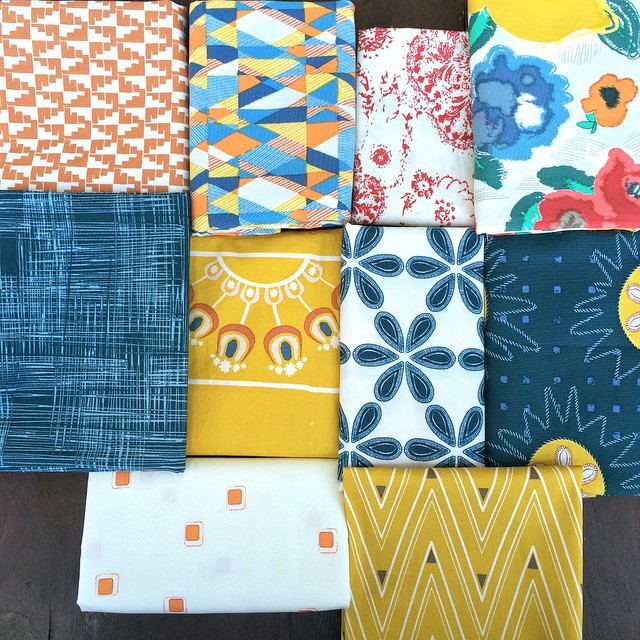
Artisan celebrates a Makers heart and objects created by hand. It portrays the mood of a rustic homey feel. Its color palette is designed to work with denim which is a huge trend right now.
When is this collection available in shops?
August 2015.
What trends are you seeing in the quilting marketplace?
Sewing and Quilting are merging with other industries such as home fashions, so the fabrics lines are more “utilitarian” in this way; they now have to serve the purpose of all the industries at the same time. Prints now tend to be more versatile and collections are more about a life-style in general and not the quilting matchy-matchy collections of the past.
What advice would you give designers about putting a portfolio together for this industry?
1. Who are you? What is your identity as a designer? Your work should tell the story of who you are.
2. Be yourself. Don’t imitate other designers. You do best when you create what comes from your heart and soul.
3. Your portfolio’s first page should show all of the prints at a glance, the whole collection along with descriptive words to support it. The following pages should show single prints per page.
4. Mock-ups are a great way to show how to use the prints. For example if you have a panel print you could show it mocked-up as a dress and/or a table runner.
5. Your second collection should build on the first collection. Using a color palette and style that works with the first collection. Remember shop owners will have left over fabric in their shop and they would rather merchandise it with your new line rather than put it on sale because it doesn’t match any other fabrics.
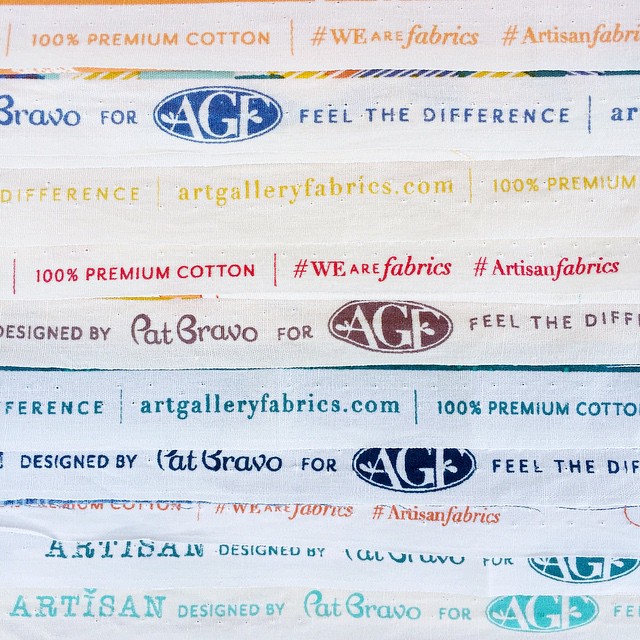
- 50% creating art
- 30-40% marketing and promotion (social media everyday!)
- 10-20% other business
Can you make a living from licensing?
Yes, after you have a build up of several collections and if your manufacturer reprints your fabrics more than once. If they only do one printing it’s much harder. It is also much easier to make a living if you license in more than one category. So maybe, fabric, cards, gift wrap etc.
Were you already in the quilting industry before you began designing fabric?
Yes, I started out as a landscape art quilter and painted my own fabrics. My friends starting buying my fabrics from me and then I moved on to having a booth at Quilt Festival where I sold my fabric and we sold out! That’s when I moved from hand painted to commercial fabrics.
If you are interested in Pat’s Artisan collection you can find where the fabrics are available through this link: http://www.patbravo.com/onlineStores.html
Sign up to receive our free Quilt Market Guide HERE and stay tuned for more interviews in this series coming soon!

